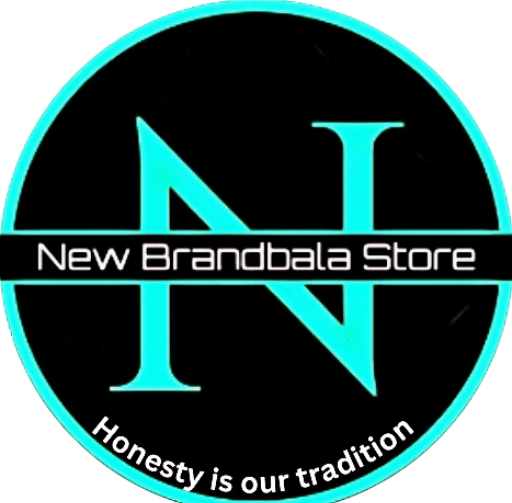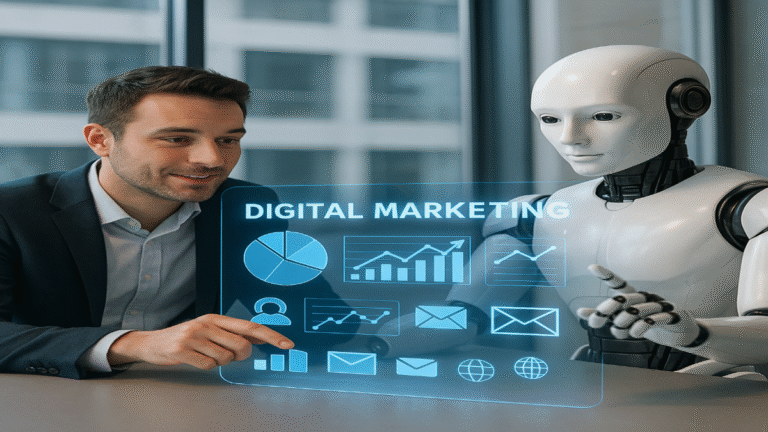Meta Description :
Explore the key differences between digital marketing and offline marketing, including their strengths, weaknesses, and how to choose the right strategy for your business in 2024.
Introduction
In the ever-evolving landscape of marketing, businesses face a critical decision: Should they invest in digital marketing or traditional offline methods? While digital marketing has surged in popularity due to its scalability and precision, offline marketing remains relevant for building local trust and tangible brand experiences. This article dives deep into the pros and cons of both approaches, helping you decide which strategy—or combination—will drive growth for your business.
What Is Digital Marketing?
Digital marketing refers to online strategies that leverage platforms like social media, search engines, email, and websites to promote products or services. It includes tactics such as SEO, content marketing, PPC advertising, influencer partnerships, and analytics-driven campaigns.
Key Strengths of Digital Marketing
- Global Reach: Target audiences across the world at any time.
- Cost-Effectiveness: Lower entry barriers compared to traditional ads (e.g., TV or print).
- Measurable Results: Track performance in real time with tools like Google Analytics.
- Hyper-Personalization: Use data to tailor messages to individual preferences.
- Adaptability: Quickly tweak campaigns based on audience feedback.
Common Digital Marketing Channels
- Social Media Marketing (Facebook, Instagram, LinkedIn)
- Search Engine Optimization (SEO) and Pay-Per-Click (PPC)
- Email Marketing and Marketing Automation
- Content Marketing (blogs, videos, podcasts)
- Affiliate Marketing and Influencer Collaborations
What Is Offline Marketing?
Offline marketing, also known as traditional marketing, relies on physical media like print ads, TV commercials, radio spots, billboards, direct mail, and in-person events. It focuses on reaching local audiences through tangible, real-world interactions.
Key Strengths of Offline Marketing
- Local Targeting: Ideal for businesses serving specific geographic areas.
- Tangible Engagement: Physical materials (e.g., brochures, flyers) create lasting impressions.
- Brand Trust: Established methods like TV ads or sponsorships build credibility.
- Audience Diversity: Reaches demographics less active online (e.g., older generations).
- Event-Based Impact: Trade shows and pop-up events foster direct customer connections.
Common Offline Marketing Channels
- Print Media (newspapers, magazines, brochures)
- Broadcast Advertising (TV, radio)
- Outdoor Advertising (billboards, transit ads)
- Direct Mail Campaigns
- In-Person Events and Sponsorships
Digital Marketing vs. Offline Marketing: A Side-by-Side Comparison
| Factor | Digital Marketing | Offline Marketing |
|---|---|---|
| Reach | Global and scalable | Localized and limited |
| Cost | Budget-friendly (pay-per-click models) | High upfront costs (TV/print ads) |
| Targeting Precision | Hyper-targeted via data and AI | Broad demographic or geographic targeting |
| Measurability | Real-time analytics and ROI tracking | Difficult to quantify effectiveness |
| Engagement | Interactive (comments, shares, clicks) | Passive (viewers absorb content) |
| Adaptability | Campaigns can be adjusted instantly | Changes require reprinting or rescheduling |
| Longevity | Content remains searchable indefinitely | Materials expire after use (e.g., event ads) |
Pros and Cons of Digital Marketing
Pros :
- Affordable for Small Businesses: Tools like Google Ads allow budget-friendly targeting.
- 24/7 Visibility: Websites and social profiles work for you around the clock.
- Viral Potential: Social media can amplify brand awareness rapidly.
- Customer Insights: Use data to refine strategies and improve conversions.
Cons :
- Oversaturation: Standing out in crowded online spaces is challenging.
- Dependence on Technology: Algorithm changes or platform outages can disrupt campaigns.
- Privacy Concerns: Stricter regulations (GDPR, CCPA) limit data usage.
Pros and Cons of Offline Marketing
Pros :
- Memorable Experiences: Tangible materials (e.g., coupons, event swag) create emotional connections.
- Less Competition: Fewer businesses invest heavily in offline channels.
- Established Credibility: Traditional media like TV or newspapers are often perceived as trustworthy.
Cons :
- High Costs: Production and placement fees for TV/radio/print are expensive.
- Limited Metrics: Hard to measure ROI accurately (e.g., how many billboard viewers convert?).
- Static Content: Once printed, ads cannot be edited, even if errors exist.
Case Studies: When Each Strategy Shines
Case Study 1: Digital Marketing Success
Company: A boutique e-commerce brand selling handmade skincare products.
Strategy: Used Instagram influencer partnerships, SEO-optimized blogs, and retargeting ads.
Results :
- 3x increase in website traffic in 6 months.
- 25% boost in sales through personalized email campaigns.
Case Study 2: Offline Marketing Success
Company: A local bakery is launching a new branch.
Strategy: Hosted a grand opening event with free samples, distributed flyers, and placed ads in community newspapers.
Results :
- 500+ attendees at the event.
- 40% of attendees became repeat customers.
Hybrid Strategies: Combining Digital and Offline Marketing
The most successful brands use omnichannel marketing to integrate both approaches. For example:
- QR Codes: Include them in print ads to drive traffic to landing pages.
- Geo-Targeted Social Ads: Promote in-store events to local audiences.
- SMS Marketing: Send discount codes to customers attending a physical event.
Why Integration Works
- Data-Driven Offline Campaigns: Use online surveys to inform direct-mail content.
- Brand Consistency: Maintain the same visuals and messaging across all touchpoints.
- Cross-Promotion: Encourage social media followers to visit physical stores (and vice versa).
Which Is Better: Digital or Offline Marketing?
The answer depends on your business goals, target audience, and budget :
- Choose Digital Marketing If :
- You want measurable ROI.
- Your audience is tech-savvy or global.
- You need flexibility to test and optimize.
- Choose Offline Marketing If :
- You serve a local community.
- You want to create memorable, sensory experiences.
- You’re building long-term brand recognition.
Frequently Asked Questions (FAQs)
1. Is digital marketing replacing offline marketing?
No. While digital dominates globally, offline methods remain vital for local businesses and niche markets.
2. Can small businesses afford digital marketing?
Yes! Platforms like Facebook Ads and Google Ads offer pay-per-click models with customizable budgets.
3. How do I measure the success of offline campaigns?
Use unique promo codes, track website traffic spikes, or conduct post-event surveys.
4. Does offline marketing still work for Gen Z?
Yes, but with a twist. Gen Z appreciates experiential marketing (e.g., pop-up shops with Instagram-worthy photo ops).
Conclusion: Choose the Right Mix for Your Business
Digital and offline marketing aren’t rivals—they’re complementary tools in your growth arsenal. By understanding your audience’s preferences and leveraging the strengths of each channel, you can build a balanced marketing strategy that drives engagement, builds trust, and maximizes ROI.




